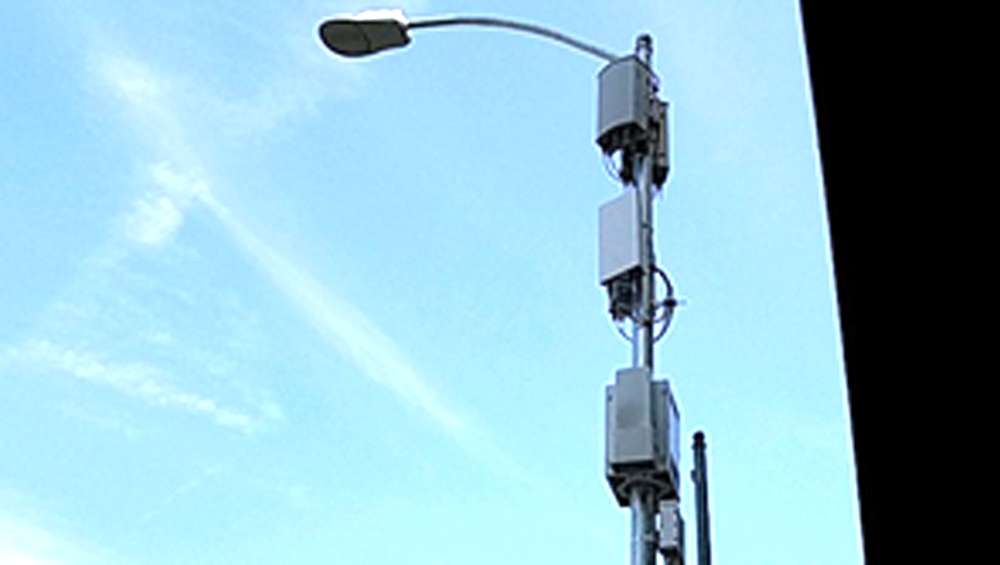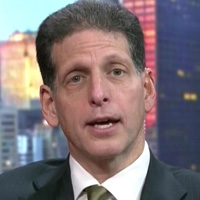
TVN Tech | Broadcasters Weigh 5G’s Potential

Wireless carriers have hailed the new 5G communications standard as a transformational technology with a broad range of potential consumer and B-to-B applications, including streaming Ultra HD (UHD) content to smartphones and TV sets, supporting ultra-low-latency cloud gaming, delivering real-time navigation information to autonomous cars and enabling augmented reality (AR) and (VR) experiences for industrial or medical use.
How much of that possibility becomes reality depends on how quickly and deeply 5G gets rolled out, and in what form, as 5G doesn’t actually refer to a single wireless technology but instead encompasses several types of wireless spectrum with different data rates and reception characteristics. For broadcasters, there are near-term B-to-B applications where 5G will be a helpful new tool, and perhaps some long-term direct-to-consumer applications where 5G might represent a competitive threat.
With the ability to deliver high data rates with low latency, 5G could be a very effective contribution path for news or sports coverage, and some broadcasters have already experimented with using 5G as a wireless camera link. With new frequency bands being opened up for 5G, there should be less competition or signals than in the crowded 4G LTE frequencies.
Carriers also plan to offer “network slicing” on their 5G networks in the future that would allow enterprise customers to contract for a guaranteed bit rate. For newsgathering, these developments might reduce the reliance on bonded cellular systems that combine modems from two or three different carriers to guarantee reliable bandwidth for feeding live video.

Sanyogita Shamsunder
“With millimeter wave [mmWave], and other bands that will be coming, there’s going to be more 5G available, and applicable, than we have today,” says Sanyogita Shamsunder, VP of technology development for Verizon. “All of the 4G networks are reasonably occupied with consumer traffic, so having that bandwidth available is going to be important.”
Cloud Implications
5G is also being rolled out as the same time that cloud platforms are bringing more computing power to the “edge,” as in physically closer to end users, and this could have broad implications for programmers that are increasingly moving content production and distribution workflows to the cloud.
Verizon and Amazon Web Services have already formed a partnership where Verizon’s data centers for receiving and processing 5G signals (mobile edge compute, or MEC) are being co-located and connected with AWS compute and storage to allow ultra-low-latency access to the AWS cloud, a service called AWS Wavelength.
AWS Wavelength zones are now operational in 10 U.S. cities with Verizon, including Boston, San Francisco, Atlanta, Denver, New York, Miami, Dallas, Seattle, Denver and Las Vegas. AWS has also set them up in Tokyo, Japan with KDDI and in Daejeon, South Korea with SK Telecom, and plans to create additional zones in the U.K. and Germany with Vodafone.

George Elissaios
AWS Wavelength General Manager George Elissaios says the partnerships with wireless carriers are part of AWS’ broader effort to bring its cloud computing power closer to customers, along with “AWS Local Zones,” local data centers strategically located in major cities, and “AWS Outposts,” on-premise hardware that runs cloud applications.
“We are committed to bringing the cloud to wherever customers need it,” Elissaios says.
Latency Reduction
In this use case, 5G would essentially be used as a wireless end-point connection to the AWS cloud, taking advantage of the robust high-speed fiber backbone Verizon has built to support its 5G network without moving traffic to the open internet or taking an additional hop to an AWS region, which greatly reduces latency.
IP transport specialist Zixi has been testing the combined Verizon/AWS system as a solution for both UHD contribution and distribution and has successfully sent video at a data rate of 80-100 Mbps with a latency under 50 milliseconds.

Eric Bolten
“The open internet is still underrated,” says Zixi VP of Business Development Eric Bolten. “But 5G in, straight through the MEC, then 5G out, that’s a signal path that’s very difficult to beat in terms of latency.”
Bolten says the 5G-to-cloud workflow could revolutionize sports production, allowing for multiple camera angles that could be used in customized feeds as well as additional real-time data that could drive sports betting applications. Elissaios adds that the new architecture should also greatly improve quality, as broadcasters will be able to send contribution-quality 4K feeds throughout the 5G network all the way to the edge, where final processing will occur.
In the future, 5G could obviously also be used to deliver popular TV programming directly to consumers, either to their smartphones or to their TVs through fixed wireless receivers (fixed wireless was the first 5G product that Verizon launched in late 2018). That could be in the form of simple broadband connectivity that consumers would use to access different OTT services, or as a virtual MVPD service over 5G that would compete with existing cable and satellite operators.
The unicast nature of 5G could also support the delivery of personalized content and targeted advertising.
Competition For Broadcast
Such wireless connectivity would obviously compete with broadcasters’ over-the-air signals, particularly as they look to reach mobile devices with the new ATSC 3.0 standard. But some large broadcasters like Sinclair Broadcast Group think that instead of competing against 5G they can use 3.0 as a complementary service to it, offering the ability to “offload” popular content from the 5G carriers and efficiently transmit it to a large audience instead of relying solely on unicast delivery through the cellular network.
Given the limited reach of some 5G frequencies, these broadcasters think that 3.0 can also fill in some coverage gaps.

Mark Aitken
“At end of the day, unicast is finite, it’s one to one,” says Mark Aitken, SVP of advanced technology for Sinclair. “What happens when all the services to the home are being delivered at 4K?”
Aitken says the future needs of consumers will best be served by hybrid networks that use a mix of wireless frequencies including both 5G and 3.0 signals. Sinclair has already partnered with Indian wireless technology firm Saankhya Labs to develop transmit and receive technology that could support such an architecture.
It is currently speaking with cloud providers, large brick-and-mortar retailers and several MVNOs (Mobile Virtual Network Operators, wireless companies that lease network capacity from carriers in order to provide service) about the prospects of 3.0 data delivery.
A Spectrum Of Complexity
To be sure, 5G has already had a direct impact on the broadcast business in the U.S. through changes in government spectrum policy that were made to accommodate it.

A Verizon 5G cell in Los Angeles.
Last summer, 987 local stations completed the FCC-mandated 39-month “RF Repack” process in which they vacated UHF Channels 38 to 51 for use by wireless operators like T-Mobile, who purchased the 600 MHz spectrum at auction to use for 5G. And the FCC is currently in the process of auctioning a large swath (280 MHz) of 3.7 GHz C-band spectrum, which broadcast and cable networks use to deliver their programming via satellite to affiliates and cable headends to carriers who can use it for 5G services.
Under the rules of the C-band auction, programmers will squeeze their current satellite distribution operations into a smaller chunk of C-band frequencies (using 200 MHz, from 4.0 to 4.2 GHz), and satellite operators, local stations and cable operators will be compensated for new equipment they need to purchase to receive the modified signals. The FCC should be able to cover their expenses; through Jan. 6 it had received more than $78 billion in bids, with more still to come.
The high demand for the C-band auction highlights the differences in spectrum that fall under the 5G NR (New Radio) standard created by the global 3GGP consortium of telecommunications standards bodies. The three types of 5G are “low-band,” or frequencies under 1 gigahertz (GHz); “mid-band,” denoting frequencies between 1 GHz and 6 GHz; and “high-band”, or millimeter wave (mmWave), with frequencies starting at 24 GHz and up.
Low-band 5G has long wavelengths that travel long distances and penetrate walls, allowing a single antenna to cover a wide area similar to 4G, but they do so at the expense of data throughput, which is only marginally better than LTE.
Mid-band 5G has shorter wavelengths that can deliver speeds of 100-900 Mbps, with coverage of several miles in radius. mmWave has very small wavelengths that deliver narrow beams across big chunks of bandwidth capable of download speeds of 1 to 2 Gbps, or more, along with latencies in the milliseconds. The tradeoff is that mmWave transmissions generally can only travel several thousand feet, have a hard time penetrating buildings, and also have problems with other barriers like leaves.

Craig Moffett
Given the various tradeoffs between coverage and data capacity, mid-band is the “sweet spot for 5G,” according to Craig Moffett, MoffettNathanson senior analyst. Since T-Mobile is the only U.S. carrier with significant midband holdings, Moffett predicted Verizon would bid aggressively in the C-band auction, perhaps joined by AT&T if they are willing to add to their already significant debt load. Final auction results, including the identity of the winning bidders, aren’t expected until February.
New Distribution And Contribution Options
A gradual shift from satellite to terrestrial distribution, either by fiber or public internet, has been underway for years, notes Zixi CEO Gordon Brooks, and the reallocation of C-band spectrum for mid-band 5G has several broadcast customers considering the use of 5G as a satellite replacement.
Zixi is already working with financial news network Bloomberg to move its premium streaming service, Bloomberg TV+, to 5G distribution using the Verizon/AWS architecture. The company is also exploring how a traditional linear cable network could be distributed via 5G, by placing a “Mi-Fi”-type 5G receiver at the cable headend that would connect to an integrated receiver/decoder.

Ronan Poullaouec
Of course, deploying new 5G transmitters, regardless of the frequency, is expensive. Widespread 5G coverage is certainly not expected overnight, which is why bonded vendors say their customers will continue to mostly use LTE for the near term. While the ability to upload at a high data rate directly from a smartphone would seem to eliminate the need for bonded technology, Aviwest CTO and co-founder Ronan Poullaouec says his company’s SST (Safe Streams Transport) technology will still be needed to blend 5G connections with LTE, Wi-Fi and other IP links and dynamically adapt bit rates through the entire signal path from camera to studio.
With over 60% of Aviwest’s customer base in Europe and the rest in North America and Asia, Poullaouec has a good global perspective on the utility of the various 5G bands. He believes that mmWave is a great solution for sports production with its ability to support high-quality 4K wireless camera links but doesn’t see it playing a big role for newsgathering because of its coverage limitations. Instead, he thinks most newsgathering will use the sub-6 GHz spectrum, as is being widely deployed in China and Taiwan today, along with LTE.
Poullaouec says that as far as broadcasters are concerned, the wireless industry is really only in the first phase of the global 5G rollout, where top upload speeds often aren’t much better than LTE. But with new spectrum being utilized, there is more bandwidth to go around and better effective coverage because there are far fewer users connecting to the same frequencies.
The second phase will come starting in 2022, where 5G coverage gets widespread enough that traffic can stay solely on the 5G network without switching back and forth frequently to LTE. That will allow carriers to offer network slicing, where professional users will be able to pay a premium to book a guaranteed slice of bandwidth within the 5G network. Poullaouec says network slicing will have a much bigger impact on broadcast workflows.
“It will change the game, as it will give TV stations the guarantee of bandwidth availability,” he says.




































Comments (1)
Michael Kennedy says:
February 25, 2021 at 11:55 am
The delivery of broadband via 5G and even 4G is not the biggest challenge to deliver broadcast signals to fixed wireless broadband customers. The real challenge is for content providers to open up their broadcast rights to include such delivery. We have been shut down, time after time with this challenge. It’s time the content providers recognize that fixed wireless is just another secured delivery option to physical cable or fiber.